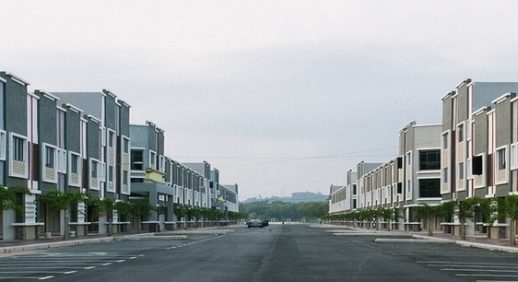Viewed through one lens, the UK residential property market is going through a period of subdued activity. According to the latest report from the Royal Institution of Chartered Surveyors, the number of homes registered for sale on estate agents’ books has fallen to record lows, the amount of time it takes to sell a house or apartment has extended to 18 weeks and sales volumes have declined for sixteen consecutive months.
But there is another perspective. In theory, the rented property sector is also facing uncertain times. For one thing, the imposition of stamp duty on all second homes has increased the cost of purchasing a property, feeding through to a reduction in yields. Meanwhile, the Government is also consulting on measures that will see tenants being given the right to ask for tenancy agreements of at least three years – rather than, say, six months or a year.The thinking is that short tenancy agreements are breeding insecurity on the part of those who rent their homes and there is a certain weight to that argument. However, many landlords may feel that longer agreements will make it harder to take action against those who fall behind with their rental payments, adding to financial pressures.
Strength in the Market
But despite these pressures it seems that the appetite for the acquisition of buy-to-let properties is still strong.
Witness, a recent report by Estate Agents firm Ludlow Thompson. According to the research, the number of buy-to-let landlords in the UK has risen to a record high of 2.5 million, compared with about 1.9 million at the beginning of the decade. As Ludlow Thompson sees it, the figures indicate that despite all the pressures, residential property is an asset class that continues to grow in popularity.
Meanwhile, separate research from Foundation Home Loans suggests that some Buy to Let landlords at least are in relatively bullish mood. According to the FHL report around 17% of private landlords plan to expand their portfolios and 23% think residential property is a good investment. 21% plan to use property to fund their retirement.
There are some rainclouds on the horizon. Applications for Buy to Let mortgages jumped in the first quarter of 2018 but analysis suggests the rise was technical. Many landlords had rushed to borrow prior to change of rules that imposed stamp duty on low cost homes that had previously been exempt. That was in 2016 and two years on, some of those landlords were remortgaging to get a better deal. In terms of new investment, IMLA (Intermediary Mortgages Lenders Association) says new investment in the Buy to Let market has fallen by £20bn since the stamp duty changes were introduced in 2016.
New Pressures
The truth is that Buy to Let landlords are facing new pressures, including not only stamp duty and the prospect of new tenancy agreements, but also the phasing out of mortgage interest relief.
So the fact that there is still a fair degree of enthusiasm for residential property as an investment class suggests that the underlying fundamentals of the market remain largely favourable.
Indeed, demand for rental property is very, very strong. As things stand, it remains difficult for first time buyers to get on the housing ladder. A deposit of at least 5% is required (which means a lot of saving at a time of stagnant wages when many would-be buyers are also paying off student loans) and those seeking the best interest rate deals are looking at deposits of 10% or more. As a result, we are living in the era of “generation rent.” Few landlords will have trouble renting their properties.
But that’s not to say that today’s landlords – and particularly those entering the market for the first time – are having it easy. Purchase prices remain high and achievable rents are limited by affordability factors. This is putting downward pressure on yields in some areas. At the same time, there are risks. A Landlord relying on one or two properties and also paying a mortgage could face significant financial stress if a tenant moves out without warning or defaults on payments. Lower yields mean less financial wiggle room.
Smart Choices
One of the best ways to reduce the risk of financial pressures is to fully assess the relationship between the purchase cost of a property, the rent that can be achieved and the consequent yield. By choosing a location where prices are relatively low and rental incomes buoyant, investors can significantly improve their returns. Smart choices are the key to making the most of a commitment to property investment.
But for an individual investor/landlord, that can be tricky. Understanding a local property market isn’t always easy – although estate agents are on hand to provide guidance – but looking elsewhere across a city, county or the country as a whole and assessing the prospects can be next to impossible when time and resources are limited.
The Route – City wealth club provides a solution by offering its Members selected residential investment opportunities. Focusing on areas where yields are highest (namely selected towns and districts in the North and Midlands of England), The Route enables Members to secure higher than average yields.
As recent surveys indicate, residential property represents a hugely attractive asset. To find out how to get optimal returns from your investment call The Route on 020 3141 9040
Become a Member
There’s a good chance you already know one or more of our Members through your business network. If you’d like to find out more about how we can help you grow your assets faster, and with less risk, please get in touch.



